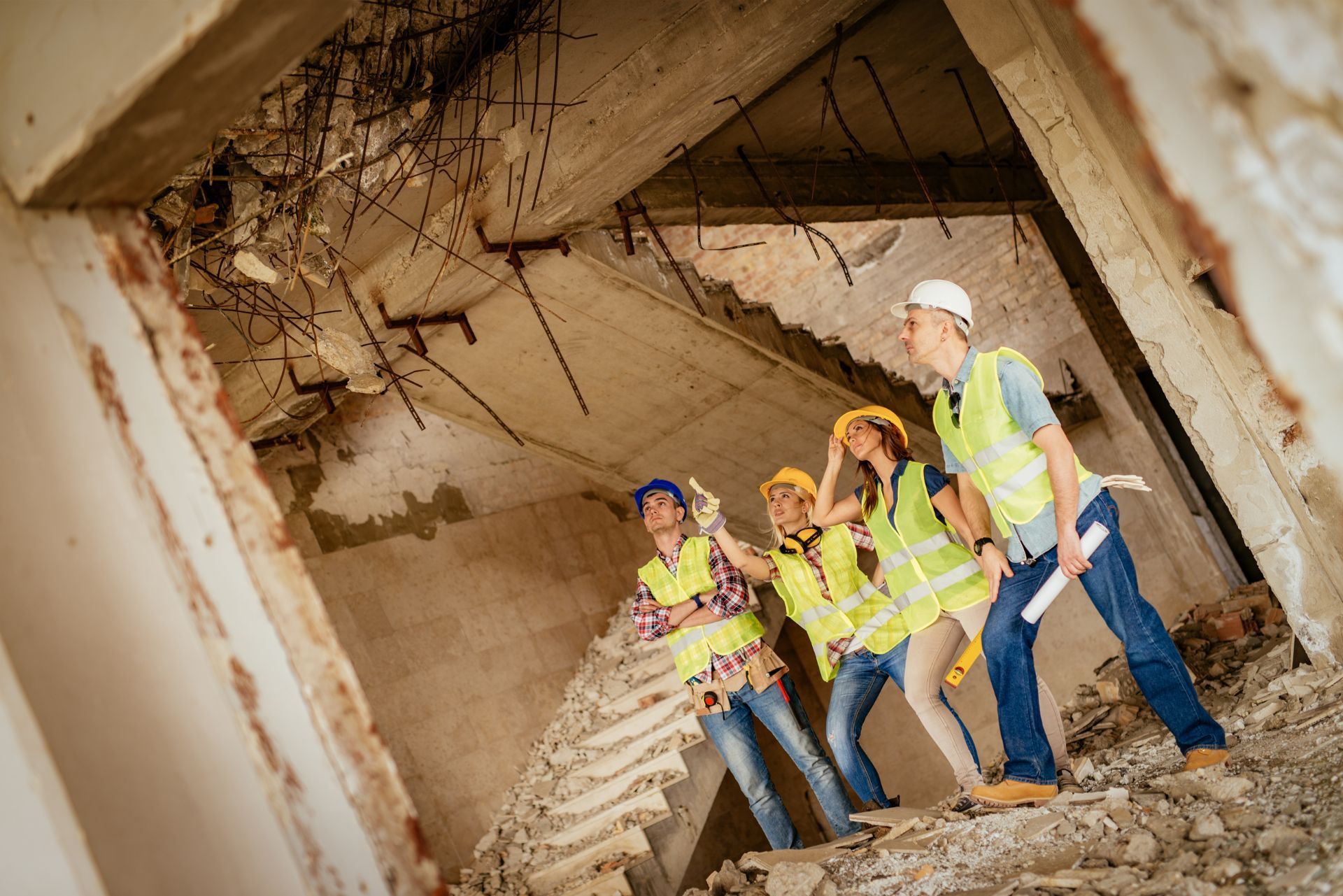Top 3 Recommended Policies

When embarking on a construction project in New York, understanding the nuances of builders risk insurance is crucial. This specialized insurance protects the property being constructed against various risks, ensuring that builders and developers can focus on their projects without the looming fear of financial loss due to unforeseen events. This article will delve into the essential aspects of builders risk insurance, its coverage, and why it is indispensable for construction projects in the Empire State.
What is Builders Risk Insurance?
Builders risk insurance, also known as course of construction insurance, provides coverage for buildings under construction. It protects against damages to the structure and its materials during the construction phase. This type of insurance is vital for contractors, property owners, and developers, as it mitigates financial risks associated with construction projects. Without this coverage, a sudden incident could lead to significant financial losses, potentially derailing a project and affecting timelines and budgets.
In addition to protecting the physical structure, builders risk insurance can also cover materials and equipment that are stored on-site or in transit. This aspect of the policy is particularly important, as construction projects often involve expensive materials and specialized machinery that can be vulnerable to theft or damage. By securing builders risk insurance, stakeholders can focus on the construction process without the looming fear of unforeseen incidents that could jeopardize their investment.
Key Features of Builders Risk Insurance
This insurance typically covers a range of risks, including fire, theft, vandalism, and certain weather-related damages. However, it is essential to note that not all policies are the same, and coverage can vary significantly between providers. Understanding the key features of builders risk insurance can help stakeholders choose the right policy for their needs. For instance, some policies may offer additional coverage options for specific types of equipment or may include liability coverage for accidents that occur on the construction site. Evaluating these features can ensure that the policy aligns with the unique requirements of the project.
Moreover, it is crucial for policyholders to be aware of the exclusions that may apply to their builders risk insurance. Common exclusions can include damage due to faulty workmanship, wear and tear, or certain natural disasters like earthquakes or floods, unless specifically included. By familiarizing themselves with these exclusions, contractors and property owners can take proactive measures to mitigate risks and potentially secure additional coverage if necessary.
Who Needs Builders Risk Insurance?
Builders risk insurance is not just for large construction companies; it is also essential for small contractors, homeowners undertaking renovations, and developers managing commercial projects. Anyone involved in the construction process should consider this insurance to protect their investment and ensure compliance with local regulations. Even DIY enthusiasts who are taking on significant home improvement projects can benefit from builders risk insurance, as it provides peace of mind that their hard work and financial commitment are safeguarded against unexpected events.
Additionally, lenders often require builders risk insurance as a condition for financing construction projects. This requirement underscores the importance of having adequate coverage in place, as it not only protects the interests of the property owner but also those of the financial institution. By securing builders risk insurance, all parties involved can proceed with confidence, knowing that they are protected against potential setbacks that could arise during the construction phase.

Builders risk insurance can be tailored to fit the specific needs of a project. Different coverage options allow policyholders to customize their insurance based on the size, scope, and risks associated with their construction project. This flexibility is particularly beneficial for contractors and developers who may be working on unique or complex builds, where standard policies may not provide adequate protection. By assessing the specific risks involved, such as the location of the project and the materials being used, policyholders can ensure they have the right coverage in place to mitigate potential losses.
Types of Coverage
Most builders risk insurance policies cover the following:
- Property Damage: Covers damage to the structure and materials caused by fire, theft, or natural disasters.
- Soft Costs: Some policies include coverage for soft costs, such as architectural fees and permits, which can accumulate if the project is delayed due to a covered loss.
- Equipment and Tools: Coverage for equipment and tools used on the job site may also be included, protecting against theft or damage.
Additionally, builders risk insurance can also provide coverage for temporary structures, such as scaffolding or storage containers, which are often essential for large projects. This added layer of protection ensures that all aspects of the construction site are safeguarded, allowing contractors to focus on completing the project without the looming fear of unforeseen financial burdens. Furthermore, some policies may offer coverage for loss of income, which can be crucial for businesses that rely on timely project completions to maintain cash flow.
Exclusions to Consider
While builders risk insurance offers extensive coverage, it is important to be aware of common exclusions. These may include:
- Earthquake and flood damage, which often require separate policies.
- Wear and tear or faulty workmanship, as these are typically not covered.
- Damage caused by intentional acts or negligence.
Understanding these exclusions is vital for policyholders, as it helps them identify potential gaps in their coverage. For instance, if a project is located in an area prone to flooding, obtaining a separate flood insurance policy may be necessary to protect against significant losses. Additionally, contractors should consider implementing risk management strategies to minimize the chances of negligence claims, such as maintaining a rigorous safety protocol and conducting regular site inspections. By being proactive about these factors, builders can better safeguard their investments and ensure a smoother construction process.
Duration of Coverage
The duration of builders risk insurance is typically aligned with the construction timeline. Coverage usually begins when the construction starts and ends when the project is completed, or when the property is occupied. However, it is crucial to communicate with the insurance provider to ensure that the coverage period matches the project's timeline. This alignment is essential not only for protecting the financial investment but also for ensuring that all parties involved in the construction are adequately safeguarded against potential losses that could arise from unforeseen events during the building phase.
Moreover, understanding the specific terms of the policy can help project managers and contractors make informed decisions about when to initiate coverage. Some builders may opt to start their coverage even before the physical construction begins, such as during the planning and permitting stages, to protect against risks like theft of materials or damage to equipment. This proactive approach can provide peace of mind and financial security as the project progresses.
Extensions and Renewals
In some cases, construction projects may face delays due to unforeseen circumstances, such as inclement weather or supply chain issues. Most insurance providers offer options to extend coverage if the project timeline changes. It is advisable to discuss potential extensions with the insurer well in advance to avoid any gaps in coverage. Additionally, understanding the specific criteria that may warrant an extension can be beneficial. For instance, if delays are caused by factors outside the contractor's control, such as natural disasters or labor strikes, insurers may be more amenable to providing extended coverage without significant premium increases.
Furthermore, it is important to keep detailed records of the construction progress and any incidents that may affect the timeline. Documentation can serve as a critical tool when negotiating extensions or renewals, as it provides evidence of the circumstances leading to the delay. This proactive approach not only helps in managing the insurance aspects but also reinforces the contractor's commitment to completing the project efficiently and responsibly, thereby fostering a stronger relationship with the insurer.
Cost of Builders Risk Insurance
The cost of builders risk insurance varies based on several factors, including the size and type of the project, location, and the coverage limits chosen. Generally, premiums are calculated as a percentage of the total construction cost, which can range from 1% to 4% of the project’s value. This insurance is crucial for protecting against losses due to events like theft, vandalism, or unforeseen accidents during the construction phase, ensuring that builders and property owners can recover financially from potential setbacks.
Factors Affecting Premiums
Several factors can influence the cost of builders risk insurance:
- Project Size: Larger projects typically have higher premiums due to increased risk exposure. The complexity and scale of the work can lead to a greater likelihood of incidents, which insurers take into account when calculating rates.
- Location: Projects in areas prone to natural disasters may incur higher costs. For instance, construction in hurricane-prone regions or areas with a high incidence of earthquakes may require additional coverage, reflecting the heightened risk.
- Construction Type: The materials and methods used in construction can also affect premiums, with more complex projects generally costing more to insure. For example, luxury homes with high-end finishes may attract higher premiums compared to standard residential builds due to the increased value of materials and labor involved.
Ways to Reduce Costs
There are several strategies to help reduce builders risk insurance costs:
- Implementing robust safety measures on-site can minimize the risk of accidents and claims. Regular safety training for workers and adherence to safety regulations can significantly lower the likelihood of incidents that could lead to insurance claims.
- Choosing a higher deductible can lower premium costs, but it’s essential to ensure that the deductible is manageable in case of a claim. This approach requires careful financial planning to balance potential out-of-pocket expenses against lower ongoing insurance costs.
- Working with an experienced insurance broker can help identify the best coverage options at competitive rates. A knowledgeable broker can navigate the complexities of the insurance market, tailoring coverage to meet specific project needs while ensuring that all potential risks are adequately addressed.
Additionally, bundling builders risk insurance with other types of coverage, such as general liability or commercial auto insurance, can sometimes lead to discounts. Insurers often reward clients who consolidate their policies with lower premiums, making it a worthwhile consideration for contractors and builders looking to save money. Moreover, maintaining a good claims history can also play a significant role in reducing insurance costs over time, as insurers may offer lower rates to clients with a proven track record of minimizing claims.
Claims Process
In the unfortunate event of a loss, understanding the claims process is vital for ensuring a smooth recovery. The claims process for builders risk insurance generally involves several steps, each designed to help you navigate the complexities of insurance claims efficiently and effectively. Familiarizing yourself with these steps can alleviate some of the stress associated with filing a claim and help you secure the compensation you deserve.
Steps to File a Claim
Filing a claim typically includes the following steps:
- Notify the Insurer: Contact the insurance provider as soon as possible after the incident occurs. Prompt notification is crucial, as many policies have specific time frames within which claims must be reported.
- Document the Damage: Take photographs and gather evidence of the damage to support the claim. This documentation should be as thorough as possible, capturing various angles and details of the affected areas, as well as any immediate actions taken to mitigate further damage.
- Submit Required Information: Provide the insurer with all necessary documentation, including estimates for repairs and any relevant contracts. Ensure that you keep copies of all correspondence and submissions, as this can be invaluable in case of disputes or follow-ups.
- Follow Up: Stay in communication with the insurer to ensure that the claim is processed in a timely manner. Regular check-ins can help you stay informed about the status of your claim and address any additional requests from the insurer promptly.
Common Reasons for Claim Denials
Understanding common pitfalls can help prevent claim denials. Some frequent reasons include:
- Failure to notify the insurer promptly after the incident. Delays can raise red flags for insurers, leading them to question the validity of the claim.
- Incomplete documentation or insufficient evidence of the loss. A lack of clear and comprehensive evidence can weaken your case significantly.
- Exceeding the coverage limits outlined in the policy. It's essential to be aware of your policy's limits and exclusions to avoid surprises during the claims process.
Additionally, it's worth noting that certain types of damage may be excluded from coverage altogether, depending on the specific terms of your policy. For instance, damage resulting from negligence or failure to maintain the property may not be covered, which highlights the importance of regular inspections and maintenance during the construction process. Being proactive in understanding your coverage can help you avoid potential pitfalls and ensure that you are adequately protected against unforeseen events.
Moreover, engaging with a knowledgeable
insurance agent can provide valuable insights into the claims process. They can assist you in interpreting the fine print of your policy, ensuring that you are fully aware of your rights and responsibilities. This guidance can be particularly beneficial when navigating complex situations, such as disputes over the extent of damage or the cost of repairs. Having an advocate on your side can make a significant difference in the outcome of your claim.

Legal Requirements in New York
In New York, certain legal requirements govern builders risk insurance. Understanding these regulations is essential for compliance and risk management.
State Regulations
While builders risk insurance is not legally mandated in New York, many lenders and construction contracts require it to protect their financial interests. Additionally, local municipalities may have specific requirements regarding insurance coverage for construction projects.
Importance of Compliance
Ensuring compliance with local regulations not only protects against legal repercussions but also enhances the credibility of the construction project. Stakeholders should consult legal experts or insurance professionals to ensure that all necessary insurance requirements are met.
Choosing the Right Insurance Provider
Selecting the right insurance provider is a critical step in securing builders risk insurance. A reliable insurer can make a significant difference in the quality of coverage and claims experience.
What to Look For
When evaluating potential insurance providers, consider the following factors:
- Experience: Look for insurers with a proven track record in builders risk insurance and a solid understanding of the construction industry.
- Customer Service: Assess the quality of customer support and claims handling, as these can greatly impact the overall experience.
- Financial Stability: Research the financial strength of the insurer to ensure they can meet their obligations in the event of a claim.
Getting Quotes
Obtaining quotes from multiple insurance providers is essential for comparing coverage options and costs. When requesting quotes, provide detailed information about the project to ensure accurate pricing. This process can also help identify any gaps in coverage that may need to be addressed.
Conclusion
Builders risk insurance is an essential component of any construction project in New York. By understanding its coverage, costs, and the claims process, stakeholders can make informed decisions that protect their investments. Whether it’s a small renovation or a large commercial project, having the right insurance in place can provide peace of mind and financial security.
As the construction landscape continues to evolve, staying informed about the latest trends and regulations in builders risk insurance is crucial. Engaging with experienced professionals in the field can further enhance the understanding and management of risks associated with construction projects.
In summary, builders risk insurance is not merely an option; it is a necessity for anyone involved in the construction industry. By prioritizing adequate coverage, stakeholders can focus on building the future with confidence.
Contact Us
Phone
Location

